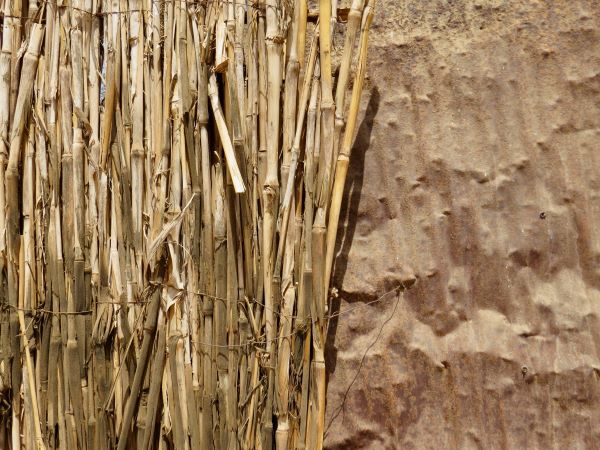Africa desperately needs robust and affordable building materials, nutritious food for humans and livestock, flood control measures and sustainable fuel. That’s where bamboo comes in. This versatile plant wears many hats — technically a type of grass, it can become flooring, food, paper and much more. Here are the reasons behind the bamboo boom in Africa.
1. Bamboo is Tough
Because it’s harder than maple and oak — which are widely considered excellent building materials — bamboo is tough enough to use for housing construction. It also has a similar tensile strength to steel, which is a measure of resistance to snapping under pressure.
Steel has a tensile strength of 500 to 1000 MPa, while bamboo is a close runner-up with a tensile strength of 650 MPa. This means bamboo can withstand intense force.
2. It Grows Rapidly
As the fastest-growing plant on the planet, bamboo can shoot up several feet a day. This is one of the main reasons it’s so sustainable. Unlike timber — which loggers can only harvest every 10 to 20 years — bamboo takes three to five years to reach full size and can be harvested well before that for food or livestock feed.
3. It Comes Back
Another advantage bamboo has over timber is that it doesn’t have to be replanted. It grows back year after year. Although some people view it as a pest for this very reason, bamboo’s Hydra-like ability to repeatedly grow new shoots and leaves makes it convenient and sustainable to harvest.
Cutting down a bamboo grove is incomparable to deforestation — within a few years, the entire grove will reach full size again. Many Africans burn wood to heat their homes and cook food, so bamboo is a great alternative fuel they can harvest indefinitely.
4. Bamboo Is Protective
Bamboo has strong roots to anchor it. Its root network holds the topsoil in place, preventing erosion. This, in turn, can protect against landslides.
Bamboo can also act as a physical barrier against floods. Like a wall, bamboo forces water to slow down as it passes through the shoots. People can plant it as flood control in areas with heavy rainfall. It can also soak up agricultural runoff that would otherwise spill into waterways and stagnant water where malaria-infested mosquitoes might lay eggs.
5. It’s Nutritious
People can and do eat bamboo. The young shoots are a common ingredient in many countries such as Thailand, China and Japan. In their raw form, the shoots contain a toxin that turns into cyanide in the human body, but cooking them destroys the poison. People eat the cooked leaves like salad or boil them to make tea.
Bamboo can also serve as a food source for animals. Cattle, horses, goats, sheep and chickens all enjoy eating the plant. This means it could serve as a valuable crop for African livestock farmers.
6. It Benefits Nearby Plants
When bamboo drops its leaves, they decompose and return to the soil. The leaves contain high levels of silica, which helps plants grow. It also suppresses some diseases and repels certain pests like leaf spider mites. By planting bamboo next to other crops, farmers might see a benefit to their plants.
7. Bamboo Is Affordable
Because of its rapid growth and short time to harvest, bamboo is abundant and affordable. This is excellent news for Africans who need low-cost housing.
People can also turn bamboo into bikes for a cheap, easy-to-use form of transportation. In some parts of Africa, vehicles are hard to come by, so bamboo bikes can help people get to school or the market.
8. It’s a Carbon Sink
Remarkably, certain types of bamboo can absorb two to four times more carbon dioxide than a similarly sized forest of Chinese fir or red pine trees. In turn, it also produces oxygen. If people planted bamboo forests on degraded land, the plants could potentially reduce massive amounts of greenhouse gas emissions.
9. It Creates Jobs
Planting, maintaining and harvesting bamboo is a labor-intensive process. Farmers usually perform this work manually, without the use of machines. This means the bamboo industry has the potential to create countless jobs in Africa.
10. Bamboo Is Versatile
The number of potential uses for bamboo is staggering. People use it to make furniture and building materials like tiles, walls, door frames and window blinds. Manufacturers convert it into vinegar, soap and wine.
People also turn it into floor mats, musical instruments, baskets, pencils and toothbrushes. It can construct transportation like canoes and bikes, as well as turn into fabric to make T-shirts and diapers. When made into pulp, people can use bamboo to create newspapers, cardboard and toilet paper.
Researchers have even been developing a way to turn bamboo into biofuel. As an alternative to fossil fuels, it could power cars and homes in developing African countries.
The Bamboo Boom in Africa — Slow, But Steady
Right now, bamboo is largely an untapped resource, but awareness is growing. The International Network of Bamboo and Rattan is promoting its use. Numerous African countries have already joined the program, which assists them with technology transfer, establishing policies and providing information about the usefulness of bamboo.
As the world bamboo market grows, Africa can create more jobs, affordable housing and new technology using the plant. They simply need to take advantage of the large amount of bamboo growing naturally on the continent.

Jane is an agriculture and environmental journalist and the founder and editor-in-chief of Environment.co, where she covers sustainability and eco-friendly living.









